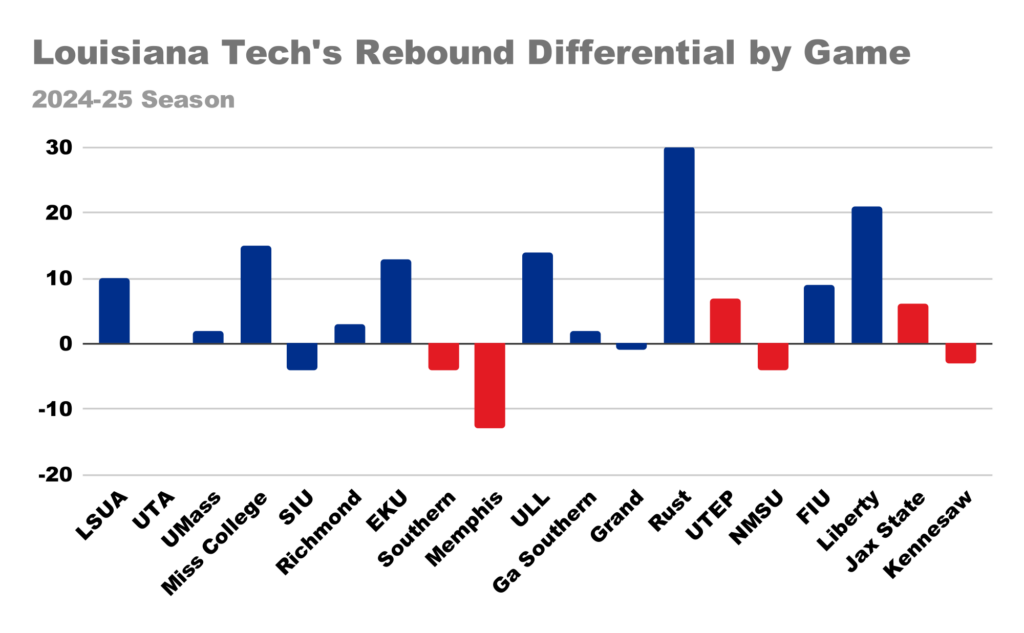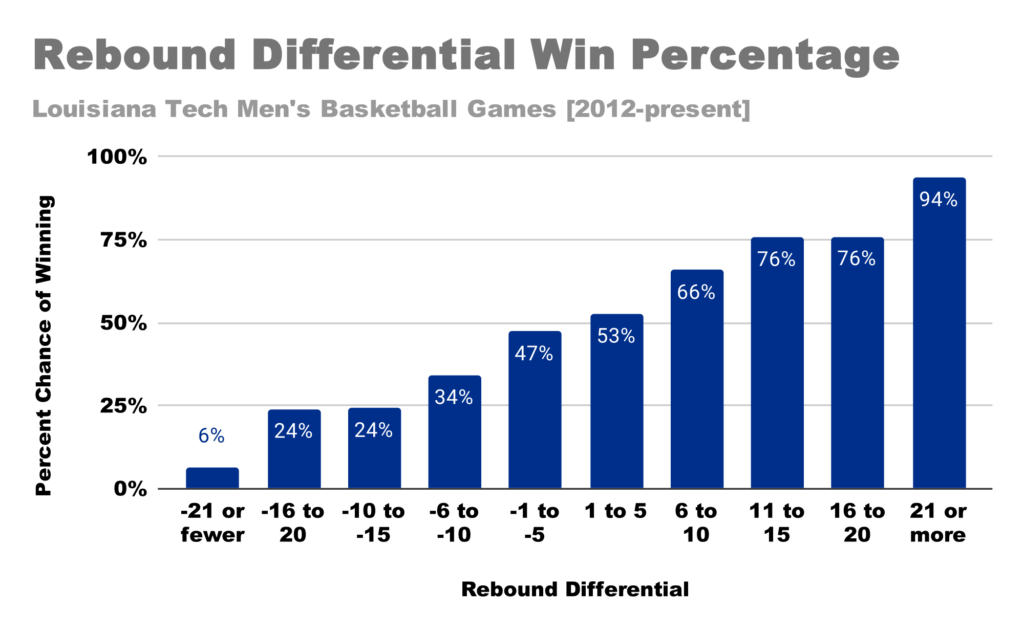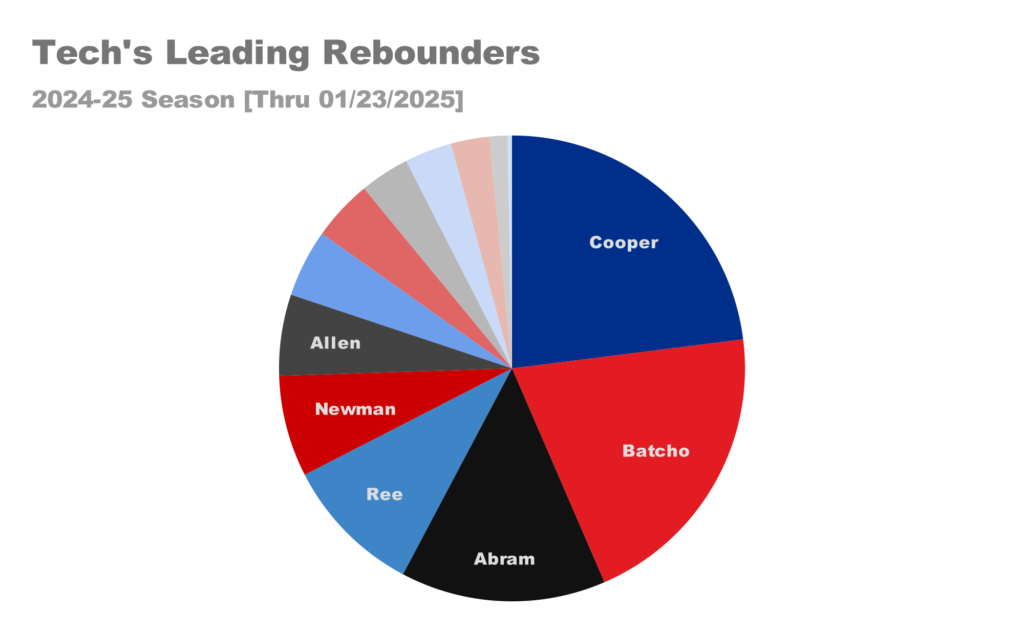The concept of rebounding is fairly simple. While you may miss 100% of the shots you don’t take [citation needed], an average Division 1 basketball player misses about 40-50% of the shots they do take. Some of those missed shots end up going over the backboard, missing the hoop entirely, or are taken just as time expires, but the vast majority end up bouncing off the rim or backboard and into the hands of another player. Whoever catches that missed shot now has an opportunity to create a scoring chance for their team.
Louisiana Tech fell to Kennesaw State this past weekend after a Devin Ree three-point attempt missed the mark just before time expired. Not only was this the sixth loss of the season for the Bulldogs, but it was also the sixth time Tech lost the rebound battle this year.
It would be easy to say “Tech at least partially lost because they failed to pull down as many rebounds as the Owls, ” call it a day, and take a nice, well-deserved nap. But where’s the fun in that when I have the opportunity to put a bunch of numbers in a spreadsheet, have it do some math for me, and find out exactly how important rebounding is for winning basketball games?
To figure that out, we’re going to be using a stat called “Rebound Differential.” On the season, Tech has averaged 37.1 rebounds per game and has allowed their opponents to gather 31.7. So the Bulldogs have a season-long rebound differential of +5.4 per game because they have collected 5.4 more rebounds per game than they have allowed.
But of course, that +5.4 rebound differential is a season average, not exactly what happens in each game (even if I would like to see what 40% of a rebound is).

Here we can see those six games where Tech was outrebounded: Southern Illinois, Southern, Memphis, Grand Canyon, NMSU, and Kennesaw. Notably, this is not simply a list of Tech’s six losses. But it shows that Tech performs better in games where they gather more boards. The Bulldogs are 2-4 in games where they are out-rebounded and 11-2 otherwise.
But 19 games in a single season is hardly enough of a sample size to make too meaningful of a conclusion. So let’s back all the way up the 2011-2012 season, Mike White’s first year in Ruston, and try to get a better picture of how Tech performs when winning or losing the rebounding battle:

The chart shows what feels like common sense. The better you are at rebounding than your opponent, the higher likelihood you have to win. In the 13.5 seasons under Mike White, Eric Konkol, or Talvin Hester, the Bulldogs have only played in one game where a team had more than 20 rebounds and lost.
So winning the rebounding battle isn’t everything, but it is something important. In total, the team that outrebounds their opponent has a 63% chance to win.
Focusing back on this season, you’d expect Daniel Batcho to be the team’s leading rebounder. After all, he is very tall and leads the team in many other statistical categories. But instead, the honor goes to someone else:

In truth, both Batcho and Kaden Cooper are crucial to Tech’s rebounding success. When the Bulldogs are on offense, Batcho grabs a team-high 13.1% of available offensive rebounds (often turning them into high-percentage putbacks), the 85th-best in the country. On the defensive side of the court, Cooper grabs 21% of available defensive rebounds, the 171st-best in the nation.
In tandem, and with some support from their teammates, these two greatly improve Tech’s chances to win, even without taking a single shot (although they are not so bad at that too).
This week, the Bulldogs welcome WKU and Middle Tennessee to the TAC. While the Hilltoppers struggle with offensive rebounds, they are ranked 91st (out of 365 D1 teams) in defensive rebounding. Meanwhile, MTSU is in the top 120 in both offensive and defensive rebounding.
So this week will be a test for the Bulldogs. Can Kaden Cooper and Daniel Batcho retain their dominance at the rim? Or will Tech fall behind in the rebounding battle and lessen their chances of getting back to .500 in conference play?
—
Want more Tech basketball stories to read? What about diving back a couple of years ago to read about that team’s struggle to score early points?

